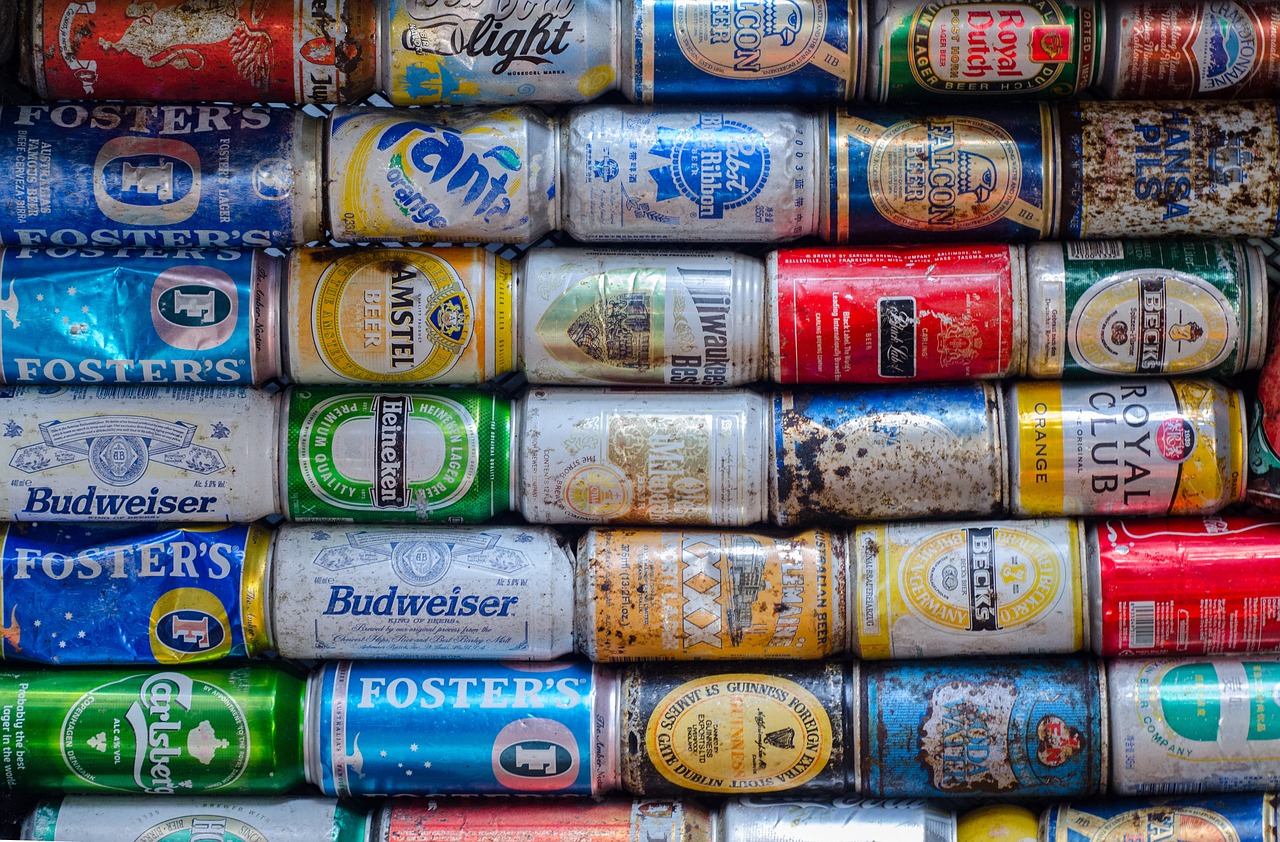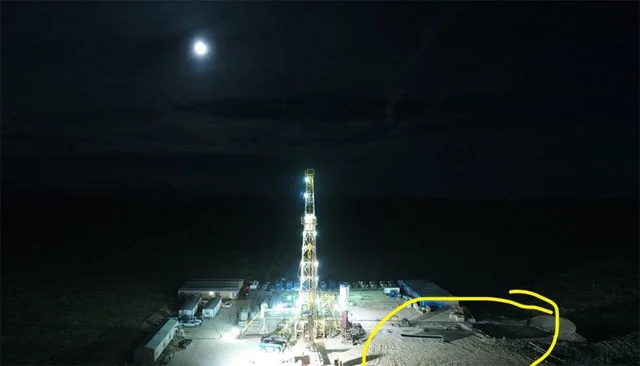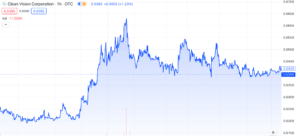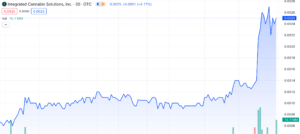Shares of Splash Beverage Group (NYSE: SBEV), experienced a substantial surge of approximately 100% in the early part of this year. The company houses a portfolio of beverage brands, but the upward momentum has lacked consistency. Regardless, some investors perceive its growth potential to rival industry giants like Celsius Holdings (NASDAQ: CELH) and Monster Beverage (NASDAQ: MNST). With a CEO like Robert Nistico, who propelled sales at Red Bull North America from zero to $1.45B, it’s a great start. But could this company truly chart a similar path? Let’s examine their background, comparables and press releases to find out.

Splash Beverage Products:
SBEV is a consumer defensive beverage company with a growing portfolio of alcoholic and non-alcoholic beverage brands. Their strategy involves rapidly developing their existing early-stage brands, while acquiring other highly visible brands that are innovators in their categories.
For those that aren’t familiar, the term “consumer defensive” is a classification of products that consumers will continue to purchase regardless of economic conditions. These products tend to have stable demand even during economic downturns because they are viewed as essential for sustenance and well-being.
Subscribe to Microcapdaily.com Right Now by entering your Email in the box below.
As we previous mentioned, the company offers a diverse range of beverages through its various brands. Their product lineup includes:
SALT Tequila: Flavored tequila products that align with the increasing demand for tequila in the US market, especially flavored spirits.
TapouT Sport Drink: Designed for fitness enthusiasts, this sports drink caters to the growing market of individuals seeking functional and energy-boosting beverages.
Copa de Vino: A unique offering of wine served by the glass, providing convenience and a modern approach to enjoying wine.
PulpoLoco: Canned Sangria, offering a convenient and accessible option for those who enjoy this traditional beverage.
These brands are carefully crafted to align with consumer preferences and market trends. For example in the last decade, demand for tequila products in the US has increased substantially by 72% and in 2021 it surpassed whiskey in retail sales, making it the second best-selling spirit behind vodka. While flavoured spirits have seen 10X growth versus just 110% growth of pure spirits.
Another note worth mentioning is their Pulpoloco flavoured sangria line holds exclusive rights to the only biodegradable paper can in the United States. While great from a sustainability perspective, it’s also significantly less expensive than aluminum packaging, which is said to increase margins and profitability.
For more information on their brands, feel free to follow this link.
Growth Comparisons:
It’s important to note that SBEV is not profitable yet, but they’re certainly experiencing a period of rapid and consistent growth. Which draws a parallel to Celsius Holdings (NASDAQ: CELH), whose stock price soared from low $3 levels to over $100 in under a year.
For Celsius, it all started in March of 2020 where they experienced a significant milestone launching a new product with Walmart – America’s largest domestic retailer. Subsequently in August of the same year, they secured a substantial $20 million investment.
After that, they further solidified their position by forming a strategic collaboration with PepsiCo. As part of the deal, PepsiCo invested $550M in CELH and nominated a director to the board.
They consistently inked nationwide distribution agreements with major retailers for their trending products that aligned with consumer preferences. The rest is history and the strategic moves triggered a remarkable surge in CELH’s valuation.
A strikingly similar sequence of events played a crucial role in propelling Monster Energy (NASDAQ: MNST) into the league of the $55 billion company it is today. Back in July ’14, MNST shares were trading at approximately $10 per share. The pivotal moment arrived on 8/13/14 when Monster Energy unveiled a game-changing strategic alliance with Coca-Cola.
This strategic partnership involved Coca-Cola (KO) making a substantial payment of $2.15 billion to Monster (MNST) and transferring its global energy business to MNST. In return, MNST transferred its non-energy drink business to KO. This monumental shift in the business landscape paved the way for Monster Energy to emerge as the undisputed leader in the US energy drink market, firmly establishing its position in history.
Comparables in Relation to SBEV:
So what can we make as fundamental insights from these case studies?
- Alignment with Consumer Trends: A pivotal lesson is that product development should align with significant consumer trends. MNST and CELH succeeded by introducing appealing products precisely when consumer preferences were shifting dramatically—energy drinks in the mid-2010s and workout drinks during the pandemic.
- Distribution Networks Drive Profitability and Growth: The significance of a robust distribution network cannot be overstated. CELH’s strategic distribution agreement with Walmart and innovative e-commerce approach during the pandemic, along with MNST’s access to KO’s distribution network, played vital roles in their ability to generate substantial profits by reaching a broader consumer base.
- Strategic Partnerships are Game-Changers: Strategic collaborations with industry giants like Coca-Cola and PepsiCo serve as a golden ticket for emerging beverage companies. MNST and CELH’s game-changing moments were marked by the significant deals they struck with industry leaders, providing them with capital infusion and vital market access, propelling them into successful scaling and global product marketing.
Applying these takeaways to SBEV, the parallels to CELH and MNST just prior to their strategic partnerships with PepsiCo and Coca-Cola are striking. SBEV’s portfolio brands cleverly tap into trending consumer preferences for flavored alcoholic beverages and workout/energy drinks—markets with multibillion-dollar TAMs and robust CAGRs projected through mid-decade.
Moreover, SBEV is swiftly building a comprehensive distribution network across the US. Their latest press releases, tell a story of market penetration that can give us a better idea of whether or not they’ll manage to grow in a matter that’s similar to the previously mentioned giants CELH and MNST.
Latest Press Releases:
October 10th, 2023
SBEV disclosed a new collaboration with Horizon Retailers Association (HRA), a rapidly expanding convenience store retail association located in Atlanta, GA. HRA represents over 2,500 retailers and 20 major vendors across the Southeast US.
HRA, a robust retail buying group, has demonstrated its commitment to TapouT Energy Drink by incorporating it into their fall planogram available to all participating HRA stores. This strategic move follows Splash Beverage Group’s recent distribution agreement with United Distributors of Georgia and is slated for rollout in October. Under this arrangement, the TapouT Energy brand will be prominently featured in HRA’s Energy Drink category set, enjoying three facings, each representing a distinct flavor.
September 7th, 2023
SBEV made an announcement regarding a (non-binding) Term Sheet for funding acquisitions. This Credit Facility, acting as a credit reservation agreement for multiple acquisitions, aims to provide acquisition financing at the current Euribor rate plus 1.5%. The facility will mature in 7 to 10 years, varying based on each specific acquisition and remains undisclosed in its total amount.
Their organizational structure is strategically designed to facilitate a series of substantial acquisitions. The CEO mentioned their focus is targeting brands with revenues ranging from $20 million to $75 million, seeing this range as ideal to maximize value through integration into their established management team and distribution channels.
August 21, 2023
SBEV expanded its reach through new or enhanced distribution partnerships. These collaborations include Lakeshore Beverage in Chicago, Southern Beverage Company in Mississippi, and United Distributors in Georgia.
Lakeshore Beverage, a part of the Hand Family Companies, is highly regarded for its passion for various beverages, ensuring effective retail distribution of Pulpoloco in 7-Eleven stores in Chicago. Southern Beverage, a family-owned business since 1939, operates across 32 counties, distributing to over 2,100 customers from five distribution centers. United Distributors, founded in 1940, stands as the largest beverage alcohol distributor in both Georgia and Alabama.
In addition to these agreements, Splash Beverage struck a deal with Blaze Pizza, one of the nation’s rapidly growing pizza chains with 340 restaurants across 38 states and 6 countries. SBEV will now have their premium wine, Copa di Vino, in nine of their Southern California locations.
Conclusion:
As of now, analysts maintain a consistent stance with BUY ratings for SBEV, setting an average price target (PT) of $2.80. This suggests a potential upside of approximately 310% from the current share price. Looking ahead, if SBEV continues to successfully land substantial distribution deals in the upcoming quarters, the PTs could escalate significantly. The exciting prospect lies in the fact that, barring unforeseen variables, SBEV is projected to undergo a remarkable growth trajectory over 100% in the next 12 months. And if they can secure a game-changing deal akin to CELH’s in March 2020, the stock could yield substantial returns and many online believe that’ll happen in short order.
We will update you on SBEV when more details emerge, subscribe to Microcapdaily to follow along!
Disclosure: We have not been compensated for this article/video. MicroCap Daily is not an investment advisor; this article/video does not provide investment advice. Always do your research, make your own investment decisions, or consult with your nearest financial advisor. This article/video is not a solicitation or recommendation to buy, sell, or hold securities. This article/video is our opinion, is meant for informational and educational purposes only, and does not provide investment advice. Past performance is not indicative of future performance.
Picture by Skitterphoto from pixabay


 Uncategorized3 years ago
Uncategorized3 years ago
 Micro Cap Insider4 years ago
Micro Cap Insider4 years ago
 Media & Technology5 years ago
Media & Technology5 years ago
 Featured2 years ago
Featured2 years ago
 Media & Technology5 years ago
Media & Technology5 years ago
 BioPharma4 years ago
BioPharma4 years ago
 Uncategorized3 years ago
Uncategorized3 years ago







